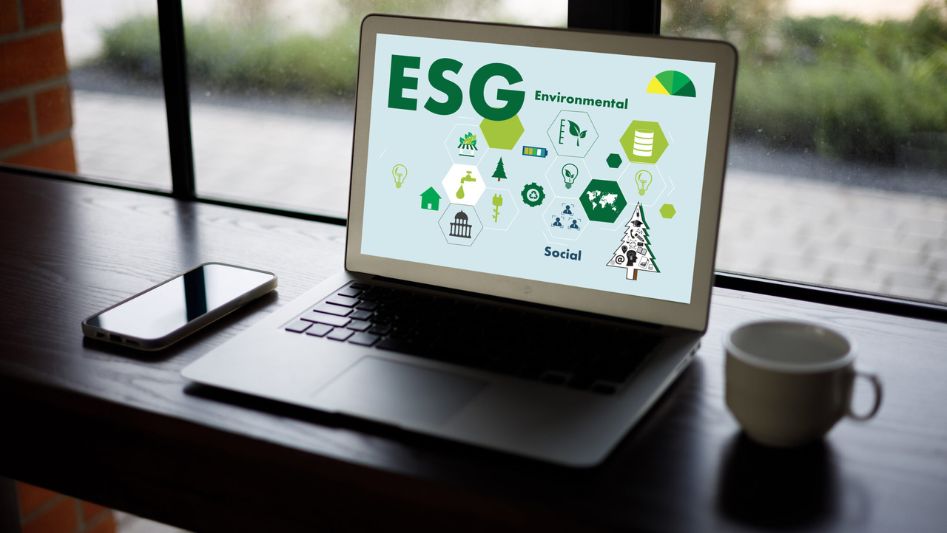The capability to manage environmental, social, and governance risks and opportunities is becoming more crucial to a company’s bottom line as environmental, social, and governance challenges continue to gain importance across all industries. However, in order for a corporation to assess its ESG obligation, the company must first know its ESG score.
What is an ESG score?

The environmental, social, and governance (ESG) score of an organization is, in the simplest terms, a number that shows how well the organization is doing on a wide range of ESG-related issues.
These might be substantial to the firm, or they can be essential to the stakeholders of the organization for reasons that are not financial but nevertheless compelling. Environmental, social, and governance (ESG) performance of an organization can be measured and understood with the help of an ESG score by both the organization and the business ecosystem as a whole.
The term “perceived” serves as the key concept to grasp from the preceding sentence. The way in which an organization is seen to be performing in relation to environmental, social, and governance concerns is taken into account in the formulation of its ESG score. In the same way, there is a difference between fact and perception when it comes to the establishment of business reputations. Even if a company has a strong policy on reducing carbon emissions and waste and a transparent, performance-based promotion system, if the public can’t access this information, it won’t change the company’s environmental, social, and governance (ESG) score.
Suppose a firm’s ESG score does not accurately represent the reality of the company’s operations. In that case, there is a good probability that the company’s ESG position is not being adequately recognized by its stakeholders. And while ESG ratings only examine the manner in which corporate behaviors are reported, a portion of their worth resides in the fact that they disclose any gaps between the internal reality of the corporation and how the outside world perceives it. Because a reality gap creates a danger, companies must report exhaustively on environmental, social, and governance (ESG) concerns to guarantee that their ESG score is correct.
Why do you need an ESG score?

An environmental, social, and governance (ESG) score is a wake-up call that should concentrate board members on their ESG obligations, where risks and opportunities exist, and how they are doing in comparison to the larger industry.
In light of their ESG performance, do they need to reevaluate the company’s overall strategy? Is the information in their corporate reporting on ESG issues detailed enough to allow them to take advantage of sustainable investment growth, or will they not be able to do so because they don’t promote their credentials in the area of ESG?
An ESG score is necessary for a company for many reasons, not the least of which is to understand its ESG stance. The increasing growth of ESG investing, in which investors hunt for portfolios consisting of sustainable assets, is perhaps the most important trend in the industry. Institutional and individual investors use ESG scores to select firms that are expected to generate high returns. This is because a dependable correlation has been found to exist between great performance on material ESG concerns and financial success. Asset managers are starting to see that a good ESG rating and strong profits go hand in hand.
A laudable environmental, social, and governance profile is also successful with other groups of stakeholders. Employees who are interested in finding future employers with goals similar to their own are paying special attention to such firms’ environmental, social, and governance policies. An ESG score gives job seekers a simple method to analyze the relative qualities of their possibilities, and firms that score highly in this area will have an easier time hiring the most qualified candidates. When revealing unsustainable practices, non-governmental organizations (NGOs) and campaign groups are less inclined to target businesses with strong ESG ratings.
Businesses will be able to identify environmental, social, and governance (ESG) possibilities and risks by using an internal ESG score that is created through balancing ESG responsibilities across a broad variety of concerns while considering sector-specific elements. If the aspects of the company’s operations that get good marks correspond to aspects that are genuine to its goal, then there is a greater chance that such aspects are financially significant. A decrease in fuel use will have a greater effect on an airline than it would on a merchant bank, yet donating a portion of a pet food company’s income to animal shelters will go down well with the consumers of that company’s products.
On the other hand, an ESG score is going to be less sensitive to behaviors based on following the crowd. A press release promoting an environmental effort is not a substitute for genuine environmental, social, and governance measures. In spite of this, it is essential to effectively explain the ESG credentials of the organization in order to eliminate any disconnect between perception and reality. It is not just the responsibility of the communications team to ensure that all of a company’s stakeholders have a good understanding of its ESG stance. Because this is such a broad topic, each employee acts as an ambassador and representative of the company’s environmental, social, and governance (ESG) culture.
How is an ESG score calculated?

There has been an increase in the need to quantify the ESG performance of businesses, which has led to the development of several scoring systems. ESG scoring is more of a measurement of perception than it is of reality. However, analysis companies that offer various calculation processes are offering to create bespoke ESG scores for clients. But, just like ESG scores are more about how people see things than how things really are, ESG data systems can be very subjective.
Because of the opaque techniques, it is difficult for organizations to comprehend where their score has originated from, and because of this, the score will change based on the analyst that the organization employs. State Street’s research shows that there is only a 0.53 correlation between the ESG ratings that MSCY and Subanalytics get for the same respondents.
A trustworthy scoring system must meet the criteria of objectivity, accuracy, and consistency. It should be able to generate scores that are similar to one another for firms in different industries and locations. The perspectives of all relevant parties should be included in it.
When it comes to the incorporation of alternative data, ESG scoring systems have generally been lacking in this department. Ratings and scores for environmental, social, and governance (ESG) factors are often derived from voluntary self-disclosure by companies and incomplete data, as was laid out in detail in our white paper on the difficulties associated with measuring ESG factors. The statistics need to be more complete if they are accurate and indicative of the rapid pace at which ESG concerns are developing. To achieve this goal, an ESG score system should include real-time analysis of millions of pieces of material from social media, print, internet, and broadcast news sources that are accessible to the general public. Its purview needs to include everything from national reporting to blogs, disclosures to regulators, and contacts with NGOs.
Throughout the process, the amount of coverage, share of voice, impact of the source, and the subject’s significance should all be considered. ESG scoring uses machine learning, natural language processing (NLP), and experienced human oversight to determine how people feel about millions of writing pieces in many different languages.
Scores may be indexed against generally acknowledged standards, such as the standard taxonomy developed by the Sustainability Accounting Standards Board (SASB), in order to help reduce subjectivity as much as possible. This provides a thorough reporting structure of ESG problems categorized by sector.
In addition, the SASB is working on defining accounting standards for sustainability measures, which will enable businesses to report on economically significant environmental, social, and governance challenges in a methodical manner. Suppose businesses include these accounts in their annual reports. In that case, they can be sure that their environmental, social, and governance (ESG) ratings are more accurate and, as a result, more useful for corporate governance and investment decisions.
When an ESG score is more reliable, calculated and referenced consistently, and used more frequently, it will have a greater impact on long-term performance. This is because it will manage ESG risks and opportunities, encourage impact investing, and drive corporate governance to make a business more sustainable.
You May Also Like
HOW CO2 COULD BE THE FUTURE OF ENERGY STORAGE?
ESG REPORTING 101: ALL YOU NEED TO KNOW & HOW TO GET STARTED
WHAT IS ESG? DEFINITION AND MEANING
WHY YOU NEED SUSTAINABILITY IN YOUR BUSINESS STRATEGY
HOW TO INTEGRATE ENVIRONMENTAL SUSTAINABILITY INTO YOUR BUSINESS STRATEGY?
